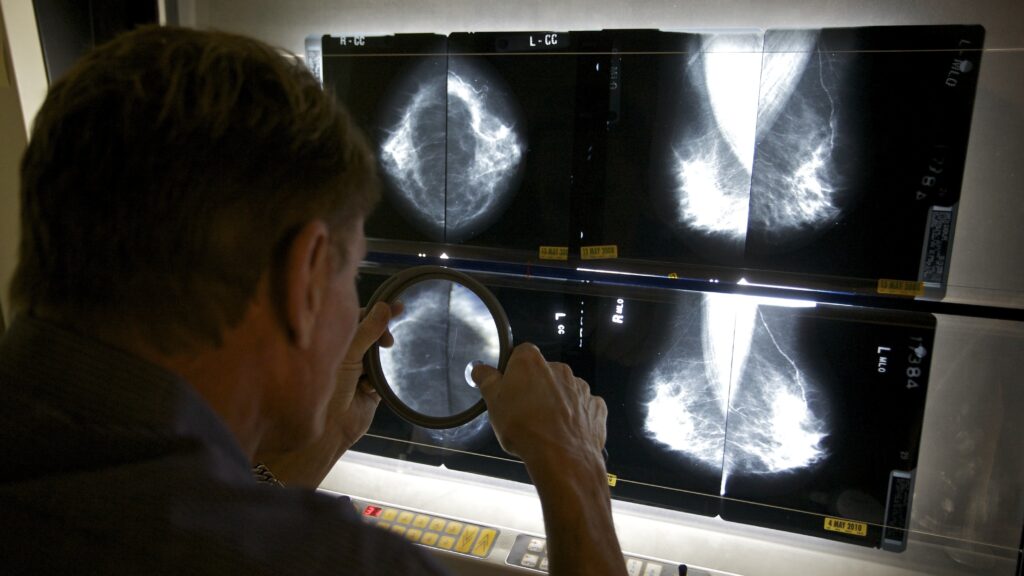The news that the U.K. has approved a preventive drug for post-menopausal women at risk of developing breast cancer wasn’t a shock to breast medical oncologist Abenaa Brewster. But the fact that a patient in her breast cancer prevention clinic hadn’t ever heard of such a possibility before was.
“I thought to myself, ‘Oh, my God, I can’t believe a woman in America is being educated about preventive therapy from European use,’ because for the last 25 years in America, we have had two drugs that are FDA approved to be used for women who are at high risk of developing breast cancer to prevent breast cancer,” said Brewster, a professor of clinical cancer prevention at MD Anderson Cancer Center.
advertisement
The newly U.K.-approved drug in question, anastrozole, is one of three drugs Brewster and others in the United States have long prescribed for people at moderate to high risk of developing breast cancer. A daily pill that people take for five years, it cuts down how much estrogen the body makes by blocking the enzyme aromatase.
“The fact that women in the U.S. generally are not even familiar or know that that exists, but know that the Europeans are using anastrozole, I think is really, to me, disappointing,” Brewster said.
Like the better-known tamoxifen, anastrozole was first used to treat breast cancer. Then, because risk doesn’t end with treatment, the hormone-blocking drug was also prescribed to prevent cancer’s return. Ten years ago, after a clinical trial showed convincingly that the drug could prevent breast cancer, U.S. oncologists began prescribing it off-label. In the U.K., anastrozole got the nod for this use last week from the country’s Medicines and Healthcare products Regulatory Agency.
advertisement
The two drugs approved by the U.S. Food and Drug Administration for prevention, tamoxifen and raloxifene, reduce estrogen in different ways but offer the same kind of protection. Brewster said they are used more often in the U.S. than anastrozole, possibly because of milder side effects.
Research dating back to 1998 demonstrated that the cancer drug tamoxifen slashes the risk of developing breast cancer by about 50% for someone at moderate or high risk. The raloxifene story is different. It was first prescribed in the U.S. for women who had the bone thinning that is the hallmark of osteopenia and osteoporosis. But after doctors observed and showed that it could prevent breast cancer, the drug was added to the toolbox for prevention, but not for treatment.
What U.K. regulators did on Nov. 6 was allow anastrozole to be prescribed for people who haven’t yet developed breast cancer but who are at moderate to high risk of doing so. If someone hasn’t had breast cancer, assessing risk can be simple, Brewster said. Clear indicators of high risk come from a biopsy showing abnormal growths: proliferative lesions or premalignant lesions in the breast such as atypical hyperplasia or lobular carcinoma in situ, or LCIS. Preventive therapy in these cases is a strong recommendation from such organizations as National Comprehensive Cancer Network, the American Society of Clinical Oncology, and the U.S. Preventive Services Task Force.
Without evidence like that, a woman can estimate her risk by entering information such as family history, age at first period, and age at which her first child was born into a breast cancer risk calculator that then generates a score. (The National Cancer Institute’s calculator specifically notes it can’t assess risk for those carrying a mutation in BRCA1 or BRCA2 genes.)
These prevention drugs themselves are not without risk. As Brewster puts it, there’s no such thing as free lunch, and when patients are healthy, their tolerance for side effects is understandably lower than when they are in treatment for active disease. Most women tolerate tamoxifen well, but there are rare side effects of uterine cancer or blood clots. Some patients taking anastrozole and raloxifene experience joint stiffness, vaginal dryness, hot flashes, or bone thinning.
“We have to educate women and say, yes, all drugs have side effects, but like every drug, you’ve got to balance the benefits with the risk,” Brewster said. “For women who are at moderate or high risk of developing breast cancer, we know that these drugs are very safe and that the benefits outweigh those small risks.”
Not all breast cancers have receptors for estrogen that these drugs block, but 85% of breast cancers do. And prevention takes aim at the unknown, shielding those who have yet to develop any form of breast cancer, estrogen-positive or not.
When Brewster gives talks in the community, she still hears that women have no idea there are drugs available to prevent breast cancer. Two possible reasons why: Most women are at average risk for breast cancer, so it may not be a conversation their doctors are having with them. And the news about these preventive drugs came out long before social media could amplify that message.
“It’s very possible that if that same data and those studies had been done now, we would have gotten a lot more women educated about preventive therapy,” she said. “We educate people, if you’ve got high cholesterol, go get a cholesterol medication. If you’ve got hypertension, you need to be on a hypertensive medication. Those are all preventive, too.”
Brewster’s happy the news from the U.K. is giving prevention a bump in attention.
“The more women that we can prevent from developing breast cancer, that ultimately is the goal,” Brewster said. “For women who are at moderate or high risk of developing breast cancer, if they’re referred to be seen in a high risk clinic, then yes, we’ve been having those conversations with them for over two decades.”
“I’m glad that the Europeans are catching up.”

